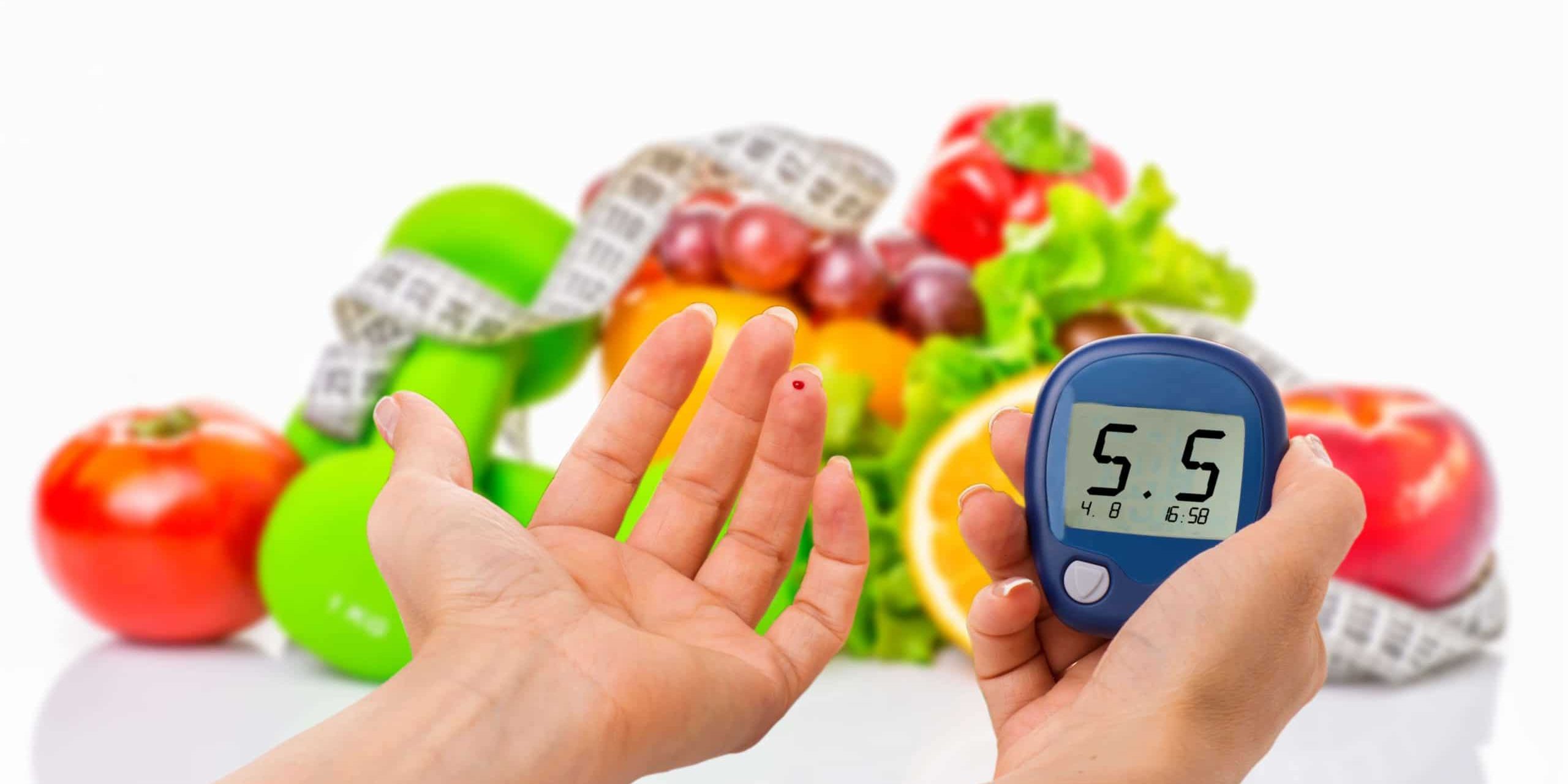Most of us can benefit from a regular review of our eating habits, but for those living with diabetes the advantages are even greater.
Simple diet changes for diabetics can make a significant difference to both everyday life and long-term health.
You should look closely at the foods you’re eating day-to-day and identify where you can substitute them for options with less sugar and fewer calories.
That doesn’t mean your new diabetes-friendly diet has to be flavourless and boring though.
Get started with these 11 simple diabetes diet tips that can keep you healthy, without sacrificing the foods you love:
1. Replace White Rice with Farro, Kamut, or Whole Grain Pasta

Switching out white rice for farro is a relatively small change which allows you to fuel your body with high-fibre carbs instead of those that may spike your blood sugar.
Farro has more protein and fibre per serving than even brown rice (which may also contain arsenic, a potent human carcinogen), and contains such vitamins and minerals as:
- Calcium
- Iron
- Magnesium
- Niacin
- Zinc
2. White Potatoes for Sweet Potatoes

Sweet potatoes provide the body with many essential vitamins while containing less resistant starch, which makes them easier to digest.
Although sweet potatoes do contain slightly more sugar than white potatoes, they are a healthier choice for those looking to make diet changes for diabetics.
3. Switch from Instant Oatmeal to Steel Cut Oats

Oatmeal is traditionally considered a healthy and practical breakfast option, however many of the premade oatmeal bags contain highly processed oats and high sugar levels.
The majority of these ‘instant oats’ come pre-flavoured as well, which often means high sugar and sodium.
Switching to steel cut oats ensures you are eating the whole grain.
Adding plain yogurt and fresh fruit can liven up the flavour without adding processed sugars.
It’s healthier and gives you more control over the amount of sugars or sweeteners added for taste.
4. Replace Processed Meat with Free Range Chicken
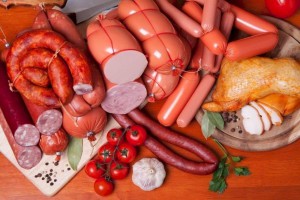
It may be quick and tasty, but processed meat has been found to increase a person’s risk of chronic diseases over time.
By swapping out processed meats for fresh meats such as free-range chicken, you’ll be able to decrease the amount of n-nitroso compounds and nitrosamines in your diet.
5. Replace Fat-free Yogurt with Unsweetened Greek Yogurt

Often products that are labelled “low-fat” can indicate that the manufacturer has replaced sources of saturated fats with sugar.
A definite warning sign for those living with diabetes.
Opting for an unsweetened Greek yogurt, or plain unsweetened yogurt instead of fat-free yogurt, provides you with a less processed snack option while decreasing your sugar intake.
6. Replace Chips with Healthy Nuts or Seeds
![]()
![]()
 Everyone knows chips are a popular snack choice, but they commonly contain high levels of unhealthy fats and sodium.
Everyone knows chips are a popular snack choice, but they commonly contain high levels of unhealthy fats and sodium.
An easy alternative for Diabetics is to replace your regular bag of chips with healthy nuts or seeds.
This can satisfy your snack cravings without negatively impacting your health.
Options such as almonds and sunflower seeds provide the satisfying snack ‘crunch’ with added nutritional value.
7. Make Homemade Salad Dressing instead of Buying Pre-bottled

Store-bought salad dressings can be high in calories and fats.
Some healthy fat is essential in any diet, but commercial dressings usually contain saturated and trans fats which in high amounts can negatively impact your health.
It’s relatively easy to make a homemade dressing with a base of virgin olive oil that is both tasty and rich in essential fats.
Plus, you’ll know exactly what your food contains.
8. Replace Sugary Cereals for High Fibre, low sugar cereals
One of the keys to weight loss and healthy eating is limiting the amount of refined carbohydrates in your diet, such as sugary cereals and processed foods.
Adding a high-fibre, complex carbohydrate (slow carb) cereal that’s low in sugar to your meal plan helps to keep blood sugars level as they are digested more slowly than simple sugars.
High-fibre cereals also help you stay more full in between meals and provide lasting energy.
9. Substitute Trans Fats for Healthy Fats
Diabetics are at a higher risk of developing heart disease and need to be careful when incorporating fats into their diet.
Remove trans (bad) fats from your diet, which can be found in many foods such as:
- margarines
- fried foods
- baked goods such as cookies and cakes
- and other packaged snack foods
Look out for ‘trans fat’ or ‘partially hydrogenated oils’ in the ingredients list.
Try to also avoid saturated fats. Most animal fats are saturated (e.g., meat and dairy products).
Incorporate good fats, like those found in:
- salmon
- flaxseed
- walnuts
- avocados
- and kale
Good fats will protect your heart and help to promote your overall health.
Did you know that good fats, such as omega-3, are essential to physical and emotional health?
They play an important role in weight control, helping to balance your mood, fight fatigue, and sharpen memory skills.
10. Replacing Juices with Fruits and Vegetables
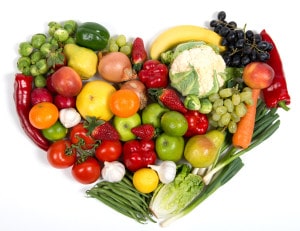
Many people dislike eating fruits and vegetables and choose to obtain their vitamins, minerals, and antioxidants by drinking a glass of juice.
While this is a great way to obtain necessary nutrients, diabetics are encouraged to limit their intake of fruit juice due to high sugar levels and extra calories.
Typically, most people do not drink just one glass of juice.
For diabetics, added carbohydrates will be reflected in higher blood glucose readings.
Blood sugar levels rise more quickly after drinking juice as compared to eating a piece of fruit.
Some juices also contain added sugars, such as high fructose corn syrup (HFCS). HFCS has possible links to obesity and high triglyceride levels.
Replacing juices with fresh fruit is beneficial, as fruit is higher in fibre and takes longer to eat.
As a result it’s filling and can carry people over to their next meal.
Another plus to eating fruit over drinking juice is that it’s easier to manage portion control with fruit over juice.
11. Trade High Fat Ingredients for Healthy Options

Making simple changes to your regular dishes is great for your health and waistline, even if you’re not a diabetic.
Reduce the amount of meat used in casseroles by adding healthy proteins and carbohydrates such as:
- tofu
- bulgur
- farro
- Kamut
- barley
- and wheat berries
You can also cut the amount of mild cheeses used in recipes by adding smaller amounts of stronger flavoured cheeses.
By making these simple changes, you can reduce calories and fat without sacrificing flavour.
For further information and tips about living with diabetes, please see the full Diabetes Resource Guide.
This page is also available in:
![]() English
English


